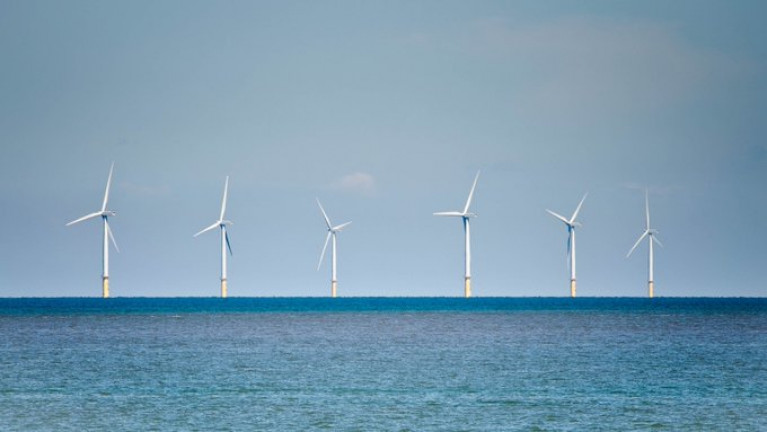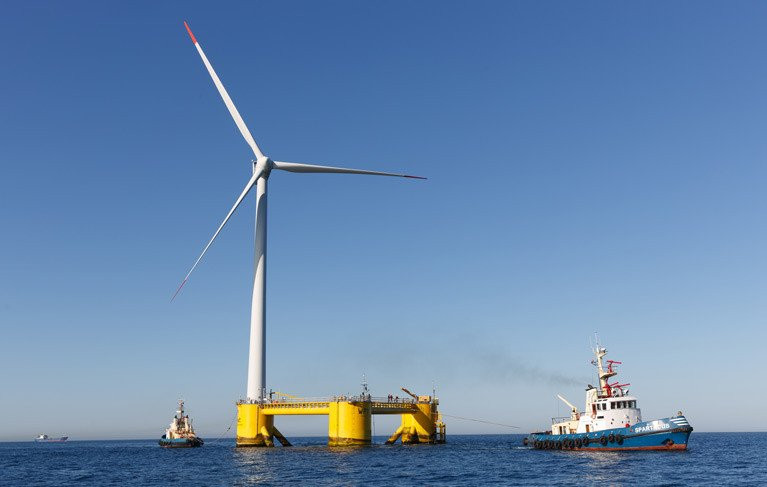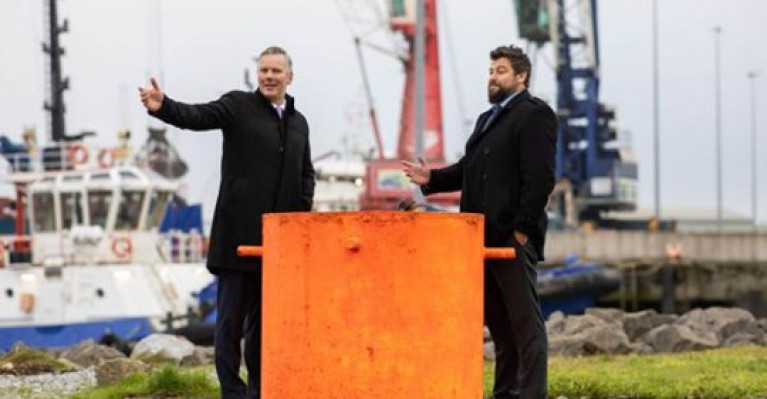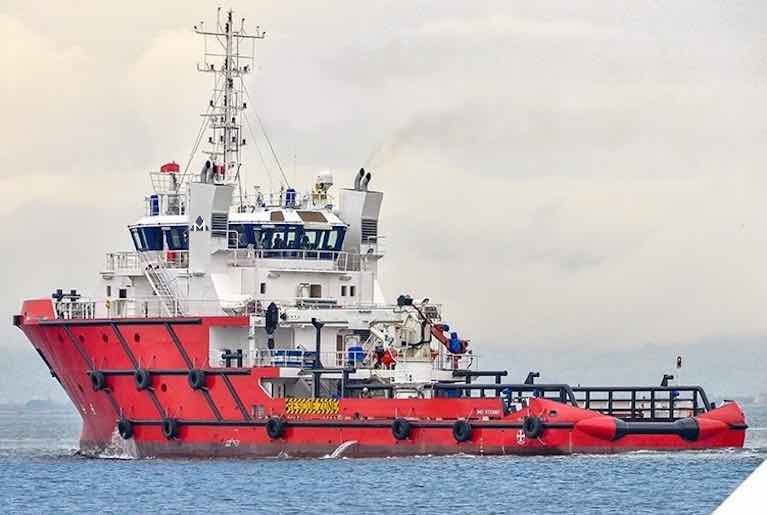Displaying items by tag: Offshore Wind
According to the Climate Change Advisory Council, investment needs to be made urgently in areas such as decarbonising the electricity system with renewables like offshore winds.
Speaking on RTÉ's Morning Ireland, the chair of the Council Marie Donnelly said it was clear that Ireland would not be able to operate a straight linear line from 2021 to 2030 in order to achieve its carbon emission reductions.
She said this is why it was decided that two carbon budgets were needed in order for Ireland to achieve its aim of reducing greenhouse gas emissions by 51% within a decade.
The first carbon budget, running from 2021 - 2025, will see emissions reduce by 4.8% on average each year for five years.
The second carbon budget, running from from 2026 - 2030, will see emissions reduce by 8.3% on average each year for five years.
Ms Donnelly said: "The really clear message is that we need to take action now in order to get the benefit of the emission reductions in the second budget period."
More from RTE News here.
Ros-a-Mhíl Could Be "Strategic Hub" for Floating Offshore Wind with Potential for 900 jobs - New Report
The south Connemara harbour of Ros an Mhíl could become a strategic hub for the floating offshore wind sector with potential for 900 jobs, according to a new report.
The report, commissioned by Údarás na Gaeltachta and presented to Minister for Marine Charlie McConalogue today, was carried out by Dublin Offshore Consultants.
It identifies what is described as “a major opportunity for the Galway Gaeltacht and the wider economy” that could “revitalise the west coast from Clare’s Loop Head to Mayo’s Béal an Mhuirthead.
Ros a Mhíl does not currently have the capacity to support large scale offshore construction activities, the report says.
"Ros a Mhíl is “unique among ports on the Irish west coast in having existing permission for infrastructure"
However, it says planning permission granted to the Department of Agriculture, Food and the Marine (DAFM) in 2018 for a 200m deepwater quay “provides opportunity to develop the necessary onshore infrastructure”.
Ros a Mhíl is “unique among ports on the Irish west coast in having existing permission for infrastructure with the potential to support the floating offshore wind project pipeline”, it says.
The report identified possible scenarios, namely:
Ros an Mhíl has the potential to be a strategic hub with an important role to play in supporting the “significant pipeline of floating offshore wind on the Irish west coast;
The proximity of Ros an Mhíl to offshore project locations, and its potential deep berth, provide the opportunity for the cost-effective and timely entry into the offshore energy market;
Based on servicing 3GW of projects, this has the potential to result in up to 900 direct and indirect jobs for the region;
Ros an Mhíl benefits from a significant land bank adjacent to the proposed 12m deep-water berth, under the ownership of both Údarás na Gaeltachta and the Department of Agriculture, Food and the Marine;
Early signs of market intent for offshore wind in the region have been demonstrated by Green Investment Group’s recent acquisition of the 400MW Sceirde Rocks offshore wind farm off the Connemara coast;
A key component of Údarás na Gaeltachta’s strategic plan 2021 – 2025 is the “Green Gaeltacht”. Developing Ros an Mhíl as a strategic support hub for the offshore wind industry will “go a long way in supporting this initiative”, it says, and has been long identified by the authority as a strategic resource, where there are feasible opportunities for the harbour to be a strategic national centre for marine renewable energy.
Údarás na Gaeltachta is “working hand in hand with the community and the harbour development committee” to ensure that the harbour will have the opportunity to “attain every possible benefit from this sector in future” and that the appropriate basic infrastructure is available in the area to that end.
Welcoming the publication, Mr McConalogue thanked Údarás na Gaeltachta for its “foresight in having this report available to contribute to the deliberations on the future direction of investment at Ros an Mhíl”.
“There is a broad context here of cross-cutting Government policies and I understand that Údarás will take this report forward with their minister so that there can be a rounded consideration of the policy issues and investment needs raised,” he said.
Údaras na Gaeltachta chair Anna Ní Ghallachair and its chief executive officer Mícheál Ó hÉanaigh also welcomed the publication.
Marine Renewables Industry Association (MRIA) chair Peter Coyle said “the enormous wind and wave energy resource off the west coast should drive major new income and job creation in the area over the next twenty years”.
“Key to exploiting this opportunity is port facilities. The MRIA has long held the view that new port capacity will be required in the west - over and above the well-regarded ambitions of Galway and Shannon Foynes - and Ros an Mhíl is the obvious candidate with its deep water, land availability, geographical advantage and the support of Údarás na Gaeltachta,” he said.
Simply Blue Group director of stakeholder liaison and external affairs Brian Fitzgerald said that “as developers of the Western Star floating offshore wind project off the Clare coast, Simply Blue Group are passionate about the opportunities this brings for the west coast of Ireland”.
“Key to unlocking this potential is the need to have strategically located ports, to support the development of local supply chains,” he said.
“Assessment of the Technical, Environmental and Socio-Economic opportunities and constraints for Ros an Mhíl port considering the proposed development of Floating Offshore Wind (FOW) on the west coast of Ireland” is available here
Wind Energy Ireland Seeking Interim Measures in New Maritime Legislation to Allow for Survey Work for Floating Wind
The State's new maritime area regulatory authority (MARA) could take up to 18 months to be established for offshore wind and other coastal activities, according to Wind Energy Ireland.
As The Times Ireland reports today, the Department of Housing and Local Government has said MARA is a “priority” for government.
However, Wind Energy Ireland believes even if the required legislation is enacted by the end of this year, it could be 2023 at the earliest before MARA is in place.
The department says that an implementation plan is being developed in conjunction with the Department of Environment and Climate to ensure the new consenting regime would be “operational as soon as possible” to allow Ireland to meet “ambitious offshore renewable targets”.
The Maritime Area Planning Bill, which has been hailed as “the biggest reform of marine governance in a century” by Taoiseach Micheál Martin is due to go before the Oireachtas — paving the way for the implementation of MARA.
MARA will license large-scale projects such as wind farms and electricity interconnectors, where planning approval will be handled by An Bord Pleanala. Inshore development will be covered under a new foreshore licensing system, giving local authorities a greater role in the sector.
Wind Energy Ireland (WEI) says interim measures will have to be taken to ensure climate targets on renewable energy are met.
The industry body says that “delays to the establishment of MARA must not delay projects” with floating wind technology which may be developed further offshore.
Val Cummins, chairwoman of WEI’s floating wind energy committee and managing director of Simply Blue Energy, a Cork-based firm, said the floating wind sector cannot afford to miss a survey season next summer.
“We need projects to be in the water to undertake geophysical campaigns for a renewable energy support scheme but we can’t do that without a license and the current foreshore licenses do not apply outside 12 miles. So we need an interim measure to cover this gap until MARA is established, ” she explained.
Ireland has at least four major players keen to start working on offshore floating wind projects — including Simply Blue Energy, which has partnered with Shell, the integrated energy company.
A report published by WEI last month said Britain, Norway and France were all moving ahead of Ireland in floating offshore wind.
The report calls on the government to establish a renewable energy support scheme (RESS) for floating wind by 2025, which would support early commercial-scale projects for the Celtic Sea and Atlantic production zones. It is also seeking grid upgrades and port improvements.
Read The Times here
Birdwatch Ireland has warned the government and wind farm developers of the risk of “creating a biodiversity crisis” in its approach to renewable energy.
As The Times Ireland reports today, Birdwatch Ireland's assistant head of advocacy Oonagh Duggan said the "renewable energy revolution in Ireland won’t be sustainable" if it is at the expense of biodiversity.
At the annual Wind Energy Ireland conference, Duggan said Birdwatch Ireland recognises that climate breakdown is critical, and that Ireland must meet its 2030 targets.
However, the Dáil had declared a biodiversity crisis, as well as a climate crisis, she noted.
Figures published earlier this week by Birdwatch Ireland show that a total of 54 Irish bird species (26%) are now on the “red list”, indicating the “highest status of concern” for their populations
Among 23 new entries to the “red list” are the kestrel, a bird of prey, along with the puffin, razorbill and kittiwake and the knot and snipe waders.
Main threats to birdlife are habitat loss and fragmentation, disturbance, poisoning, and persecution - largely driven by policies moving “in the wrong direction”, Duggan said.
Renewable infrastructure is “one more thing for birds to contend with”, due to the risks of bird strike/collision, displacement, barrier effects and habitat loss, she said.
A bird wind sensitive mapping tool for onshore wind, which had been developed by Birdwatch Ireland and circulated to local authorities, “wasn’t as widely used as we would have liked” and is a “cause of concern”, she said.
She also said the organisation was very concerned to ensure that marine protected areas (MPAs), which Ireland has committed to, were advanced before the roll-out of renewable energy.
Ireland could learn from Britain’s model in establishing a liaison group between the fishing industry and the renewable sector, Dale Rodmell of the National Federation of Fishermen’s Organisations (NFFO) told the conference.
This liaison group has developed a “best practice guidance on fisheries liaison”, which includes guidance on disruption settlements and community funds, he said.
A new version of this guide will focus on interactions between fisheries and cables in relation to planning and mitigation, he said.
“Two-way communication” is key, he said, and “co-existence” is best “tackled early” at the planning stage, he said.
Rodmell outlined the many risks posed by offshore wind farms to certain fishing activities, and said much depended on how farms were laid out and how much space there is between turbines.
Floating wind turbines - a new technology for deeper water - pose particular risks due to the need for mooring networks, he said.
He stressed the importance of “managing the relationship” on the ground with coastal communities, through agreed protocols and with potential community benefit initiatives such as funding for marine research projects.
Read The Times Ireland edition here
Shell Returns to Irish Energy Market after Corrib With Offshore Wind Partnership With Simply Blue Energy
Minister for Foreign Affairs Simon Coveney has welcomed Irish offshore energy Simply Blue’s deal with multinational Shell to develop its floating wind farm in the Celtic Sea.
Simply Blue Energy and Shell confirmed today that the multinational is acquiring a 51 per cent share in the Emerald project off Kinsale, Co Cork.
It represents Shell’s first return to the Irish energy market since it sold off its controversial Corrib Gas project in North Mayo.
Simply Blue Energy says the joint venture will use floating wind technology to develop 300MW of installed capacity initially.
As Afloat reported last July, the Irish renewable energy company was exploring the development of this island's first floating offshore wind farm close to the Kinsale gas field.
It says it will have the potential to scale-up to a total installed capacity of 1GW - equivalent to powering 800,000 Irish homes or the capacity of the Moneypoint power station, Ireland’s largest electricity generation station, it says.
Floating wind technology can be installed in deeper waters than fixed wind turbines allowing this project to be placed 35km – 60km offshore, reducing visual impacts, it points out.
It says that “depending on the size of turbines selected, the first phase of the project will include between 15 and 25 turbines”.
“The assembly, installation and deployment of these turbines could stimulate hundreds of high-quality jobs in the local supply chain,”it says, with long-term operations and maintenance of the turbines requiring local skills and services in Cork harbour for “up to 25 years”.
Colin Crooks, Shell’s vice-president for offshore wind, said in a statement: “At Shell we aim to build an integrated power business spanning electricity generation, trading and supply.”
“This project could provide green power to consumers and businesses alike and contribute towards Shell’s ambition to be a net-zero emissions business by 2050, or sooner,” he said
“Working alongside coastal communities to create shared value is key to success and this is why we have chosen and look forward to working with Simply Blue Energy who are rooted in the local community,” he said
Simply Blue Energy chief executive Sam Roch-Perks said that floating wind energy is a major opportunity for Ireland to become a “Green Gulf”, by “realising the benefits of its vast marine and offshore wind resources without negatively impacting our beautiful coastlines”.
“Our shared vision for Emerald is to do the right thing for our stakeholders, the community and the environment,” he said.
“ This announcement represents an important milestone in the ability of the Emerald project to ensure the government meets its climate target of 5GW of offshore wind by 2030,” he said.
Shannon Estuary Has Potential to Become Global Hub for Floating Offshore Wind Generation
The Shannon Estuary has the potential to become a global hub for floating offshore wind according to a major new study.
If such a project were to be progressed, writes the Limerick Leader, it could attract up to 12 billion in investment and lead to the creation of up to 30,000 jobs over the next 20 years.
The Offshore Wind Potential Study (download)- commissioned by Shannon Foynes Port Company - by specialist geotechnical engineering consultancy Gavin & Doherty Geosolutions identifies the potential, through capitalising on the unique wind resource and deep-water port in Foynes to turn the State into an exporter of energy and generate unprecedented job creation in the process.
It finds that Shannon Foynes is best placed to service the future offshore floating wind market due to the proximity to resource and market; availability of the deepest watercourse in Ireland and one of the deepest and most sheltered estuaries in the world; extensive future landbank availability; and the existence of Shannon Foynes Port Company as a statutory authority with National Tier 1 port status.
The fact that the port also has European Commission, Trans European Transport Network core corridor status on North/South and East/West corridors and the existing 1.6 GW connectivity to our own national grid were also key findings of the report.
For further reading click the newpaper here.
Cork-Based Shipping Company Mainport Enters Offshore Wind & Research Markets
Cork based shipping company, Irish Mainport Holdings, has announced its entry into the Offshore Wind Sector with its investment in a 50-metre Survey and Research Ship, the Mainport Geo, and at the same time buying a share of Wicklow based offshore services company, Alpha Marine.
In Ireland, Mainport operates three tugs in the Shannon estuary, provides a dedicated supply vessel at the Kinsale Natural Gas Field, as well as ship agency and stevedoring operations in Cork and Limerick. Internationally, Mainport operates seismic support ships in worldwide trading and has significant interests in fast crew boats and anchor handler ship in Malaysia and Australia.
Mainport also purchased all the marine assets of SO.PRO.MAR which was the leading Italian company in providing marine services to the Mediterranean scientific research market. A new company Mainport Med, based in Rome, was set up during 2020 with local Italian partners.
The new ship, 2015 built Mainport Geo is 50 m LOA, has DP 2 system, quieter, and economic diesel-electric engines, FIFI 1 and SPS notation for 35 passengers. She is located in Ivory Coast at present and will be delivered to Cork shortly.
Alpha Marine has a long history of service to the offshore wind sector, both in Ireland and overseas. Since 2004, the company has provided tug and workboat charter, crew transfer vessels (CTVS), hydrographic survey, subsea repair and maintenance and most recently, Environmental & Geophysical survey to offshore wind in Ireland and the UK.
Tim Greenwood, Commercial Director of Alpha Marine said: “Alpha Marine is looking forward to a bright future for offshore wind in Ireland and we are naturally delighted to partner with Mainport. This strategic investment will increase our operational capability and enable us to deliver a strong Irish supply chain proposition to windfarm developers and tier 1 & 2 contractors. Over the last year or two, we have seen an uptake in enquiries for geophysical survey so the added capability that the Mainport Geo brings us is very exciting indeed.”
Dave Ronayne, Chief Executive of Mainport said, “We are delighted with this new ship, which will be very suitable for the offshore renewable sector in Ireland. We know there is over €5 Billion investment planned over next few years on the east coast of Ireland by many major existing offshore wind operators such as Innogy, Parkwind, ESB, Statkraft, Fred Olsen and SSE and all these new wind farms will require surveying services. This ship is also very suitable for the Italian scientific research markets.
We are very happy to join with Alpha Marine who is ideally located on the east coast of Ireland and who have a great track record on providing services to the offshore wind industry over the last decade. Our combined resources will allow us to provide a full marine and technical solution to all marine requirements.”
































































